 |
| Photos by Ulysses Ang |
Oh, most definitely not. A minor mental re-adjustment is indeed necessary to re-connect the Yaris nameplate to something that looks so angular and menacing, but underneath, it’s essentially the same tried-and-tested formula that Yaris owners and fans have come to love over the years.
Outside, Toyota has taken a completely different approach in designing the Yaris. Whereas the previous generations of the Yaris would have taken a curvy, egg-shaped shell, the new one is more easily describes as ‘Vios hatchback’. And that’s a good thing. The Vios is already a great looking sub-compact as it is and swapping the trunk for a hatchback rear end just ups the sportiness factor. More than anything, the angularity of the Yaris has given it much more presence and gravitas—both of which were rather lacking before. But more than just grafting a new backend, Toyota designers added some nifty touches that add a distinct flavor to the Yaris.
Upfront, it’s actually more eye-catching with the black handlebar grille that extends all the way down the front bumper and the arrow-shaped headlights that taper at the edges. At the sides, the Yaris features blacked out B- and C-pillars giving it the illusion of a floating roof. And finally at the back, it features a plate holder that echoes the handlebar grille flanked by unique (as in the only Toyota globally to have this design cue) C-shaped tail lamps. All in all, the design works very well, cutting a familiar yet different silhouette next to the sea of Vios running around. There are perhaps two exceptions and these are fairly minor: one is the body-colored door moldings which distracts from the clean, angular lines and the standard alloys which are clearly shared with the Vios. A note to Toyota: a sporty hatchback needs sportier rims.
Inside, the Yaris continues to echo the Vios in almost every way. The entire look and feel will be familiar to any current generation Vios owners. It gains the Vios’s newfound style like the instrument cluster migrating to the more traditional position (in front of the driver as opposed to the center console) and the ‘floating’ integrated audio system. The previous Yaris was often bashed for using low-rent plastics (although I found them to be pretty alright), but the new one improves on that by leaps and bounds.
Though the dashboard is still generally made up of hard plastics, the new Yaris has much better consistency in texturing, fit and finish. It must be noted that the love-it-or-hate-it faux leather stitching is still present. The crisp and solid-feeling controls communicate a sense of excellent build quality while the use of orange-and-white instrumentation (replicated as stitching on the seats) add a hint of differentiation and sportiness. Again, you cannot fault the Yaris’s cabin, given the P 755,000 asking price except perhaps for two things: an unsightly cut on the dashboard near the driver’s side air conditioning vent and a glove box that doesn’t seem to close tightly.
Unlike the current-generation Vios which is essentially a re-skinned version of the previous model, the 2014 Yaris migrates its platform from the global second-generation model onto one that’s actually shared with its sedan sibling. Because of the move, the Yaris is now substantially longer by 315 millimeters with a wheelbase stretched by some 90 millimeters. Together with better interior packaging, it equates to a larger and roomier interior. The front passengers will love the flat-bottomed steering wheel, unobtrusive dashboard, and thinned out center console which allows you to spread your legs without banging knees. Those in the back won’t feel left out with surprisingly good levels of knee and legroom (up 77 millimeters). Three abreast wouldn’t be a problem with the flat rear floor and individual headrests and three-point seatbelts for all. Even the luggage space, which was a bane of the previous Yaris, has been fixed with a deeper cargo hold and the added flexibility of split-folding seats (finally).
There’s actually one aspect where the Yaris seems to have digressed and that’s in the lack of cubby holes. Whereas the previous Yaris held the record perhaps for having at least three glove boxes and other places to storage knick-knacks, the new one doesn’t even have one decent storage bin. During a week with the Yaris, I couldn’t even find a place to store my mobile phones much less things like sunglasses, loose change, and the iPod.
Sharing its drivetrain with its Vios sibling, the biggest news for the Yaris is that it now offers a 1.3-liter guise. In terms of driving experience though, it’s pretty much identical to a Vios. The previous Yaris was notorious for not being able to absorb heavy road cuts and cracks. Thankfully, the new one does much better. Even after pumping the tires up to 35 PSI (the official recommended tire pressure for a fully-loaded Yaris), the ride is surprisingly supple. The NVH isolation is excellent as well. Aside from vast improvements in the comfort aspect, it also behaves through corners with much more confidence. There’s some noticeable body roll (perhaps due to the softer suspension set-up), but it feels much more secure and less nervous, especially at higher speeds than before. The electric power steering is numb and lacks feedback, but it makes dashing in and out of traffic easy. Visibility all around is also good, though not to the same spectacular levels as the previous Yaris.
In its 1.3-liter form, the Yaris 1.3 E comes with just 85 horsepower and 121 Nm of torque which don’t sound a lot. In reality though, it’s lively and perky. Power comes in quickly and the Yaris’s 4-speed automatic seems well geared for city traffic. Of course, as speeds build up, it loses steam rather quickly. Anything below 120 km/h is fine and dandy, but anything above that, and the Yaris will struggle. 140 km/h downhill is already a feat for this car even if the engine still had some RPMs left in it. After a week’s worth of driving, the Yaris 1.3 E checks in at 9.6 km/L in city traffic and 16.9 km/L in highway.
The Toyota Yaris 1.3 E is priced at P 755,000 but since it’s kitted in TRD apparel, the cost goes up to P 821,400 (P 20,300 for the Front Skirt, P 25,200 for the Rear Skirt, and P 20,900 for the Side Skirts). And with that much money, it’s already more expensive than a rival 1.5-liter hatchback. Discounting the TRD body kit though, the Yaris 1.3 E is a surprisingly good deal. It’s certainly not poised to have the same sort of loyal following as other sub-compact hatchbacks out there, but it’s still a surprisingly fresh thing for Toyota. The all-new Toyota Yaris may have lost its cutesy image, but underneath the sharp suit, it’s still the zippy, roomy, and painless to own car that people have come to love.
2014 Toyota Yaris 1.3 E
|
|
| Ownership | 2014 Toyota Yaris 1.3 E A/T |
| Year Introduced | 2014 |
| Vehicle Classification | Sub-Compact Hatchback |
| The Basics | |
| Body Type | 5-door Hatchback |
| Seating | 5 |
| Engine / Drive | F/F |
| Under the Hood | |
| Displacement (liters) | 1.3 |
| Aspiration | NA |
| Layout / # of Cylinders | I4 |
| BHP @ rpm | 85 @ 6,000 |
| Nm @ rpm | 121 @ 4,400 |
| Fuel / Min. Octane | Gasoline / 91~ |
| Transmission | 4AT |
| Cruise Control | No |
| Dimensions and Weights | |
| Length (mm) | 4,115 |
| Width (mm) | 1,700 |
| Height (mm) | 1,475 |
| Wheelbase (mm) | 2,550 |
| Curb Weight (kg) | 1,040 |
| Suspension and Tires | |
| Front Suspension | Independent, MacPherson Strut |
| Rear Suspension | Torsion Beam Axle |
| Front Brakes | Vented Disc |
| Rear Brakes | Drum |
| Tires | 185/60R15 |
| Wheels | Alloy |
| Safety Features | |
| Airbags | 2 |
| Anti-Lock Brakes (ABS) | Yes |
| Traction / Stability Control | No |
| Parking Sensors | No |
| Exterior Features | |
| Headlights | Halogen |
| Fog Lamps | Yes, Rear |
| Auto Lights | No |
| Auto Wipers | No |
| Interior Features | |
| Steering Wheel Adjustment | Tilt |
| Steering Wheel Material | Urethane |
| Seating Adjustment | Manual |
| Seating Surface | Fabric |
| Folding Rear Seat | Yes, 60/40 |
| On-Board Computer | Yes |
| Convenience Features | |
| Power Steering | Yes |
| Power Door Locks | Yes |
| Power Windows | Yes |
| Power Mirrors | Yes |
| Climate Control | No |
| Audio System | Stereo CD MP3 Aux USB |
| No. of Speakers | 4 |
| Steering Wheel Controls | No |


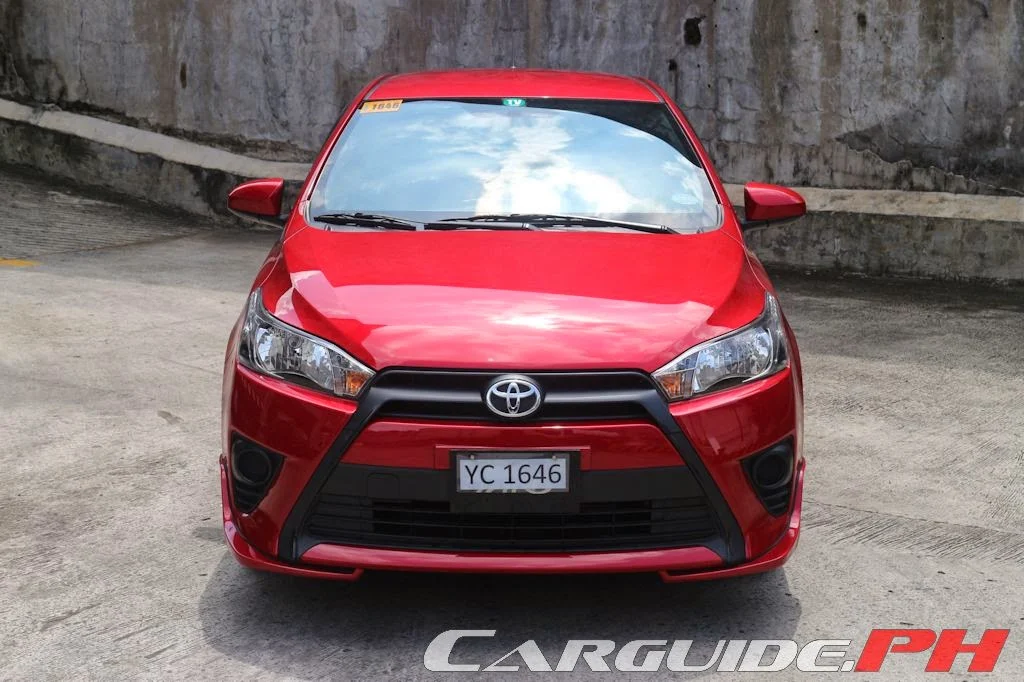









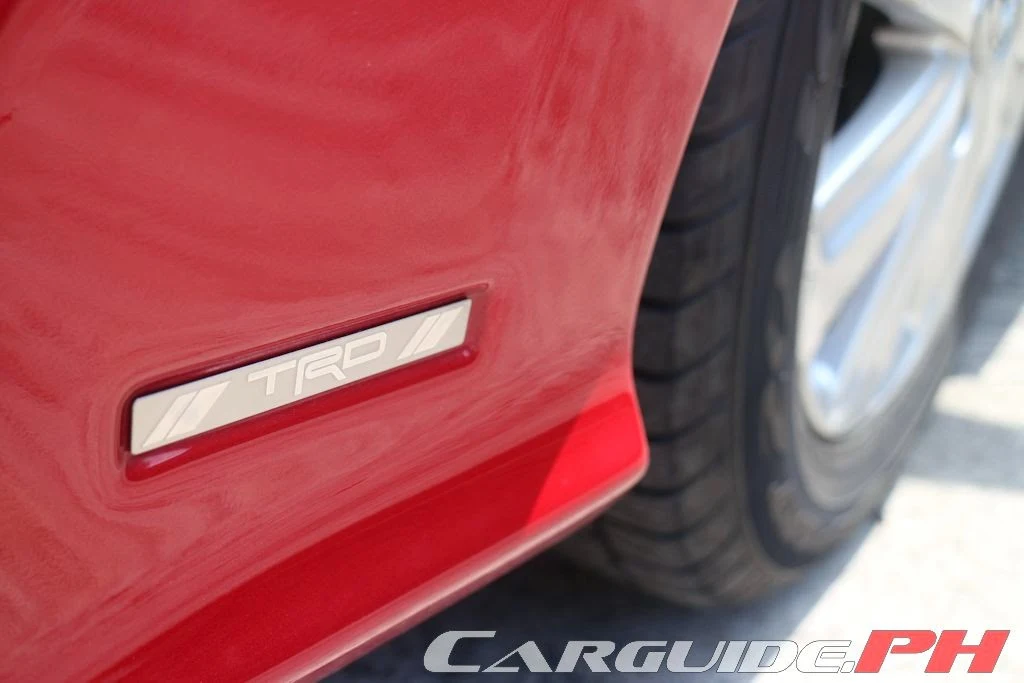


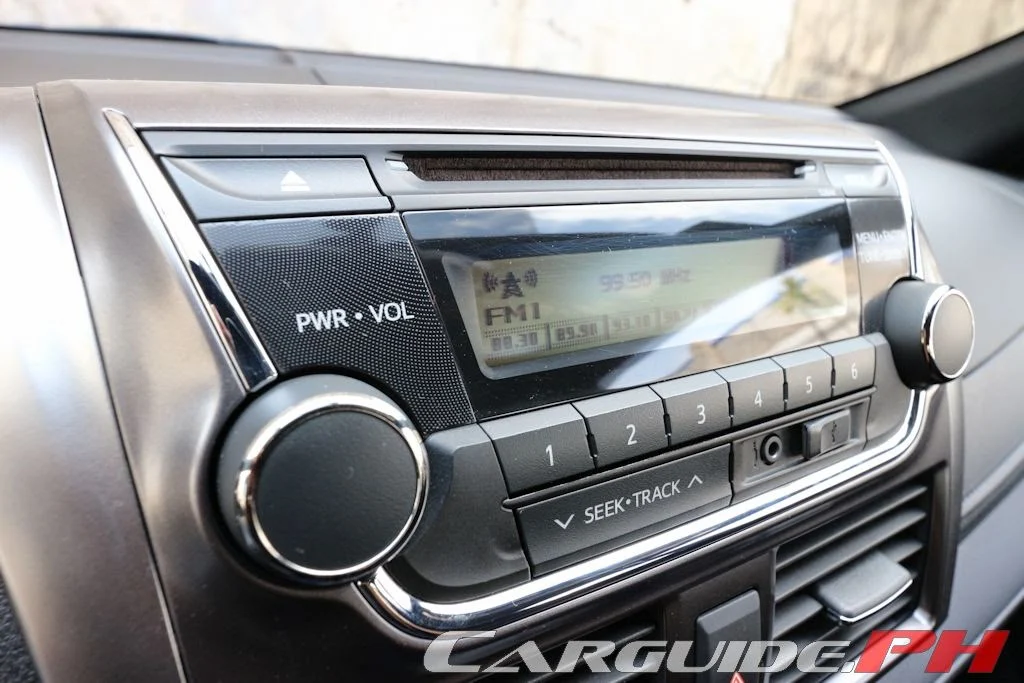

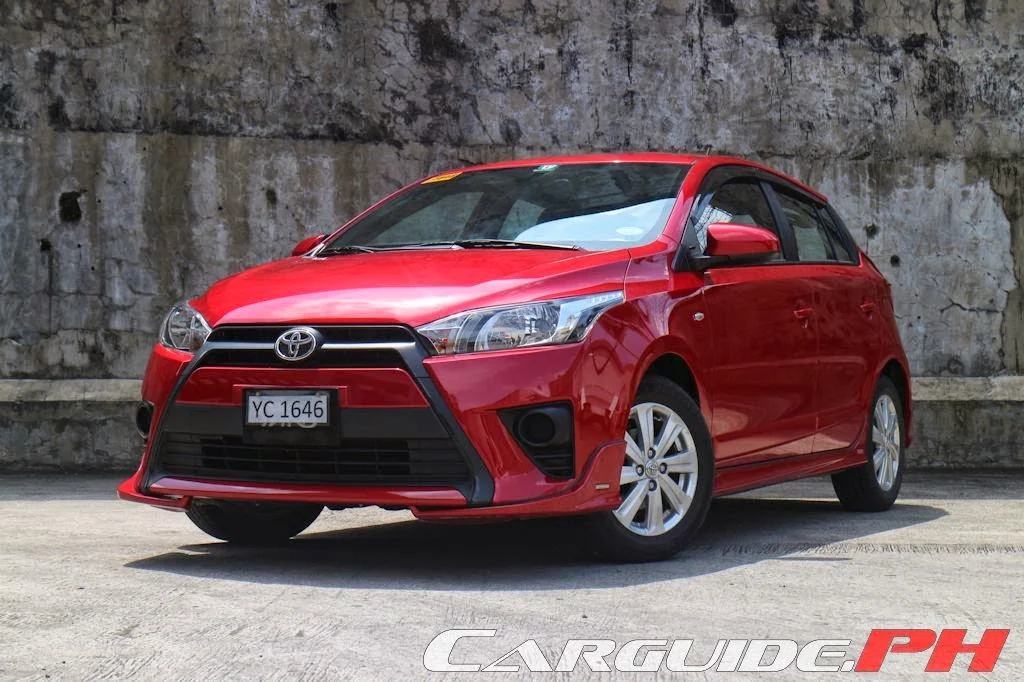
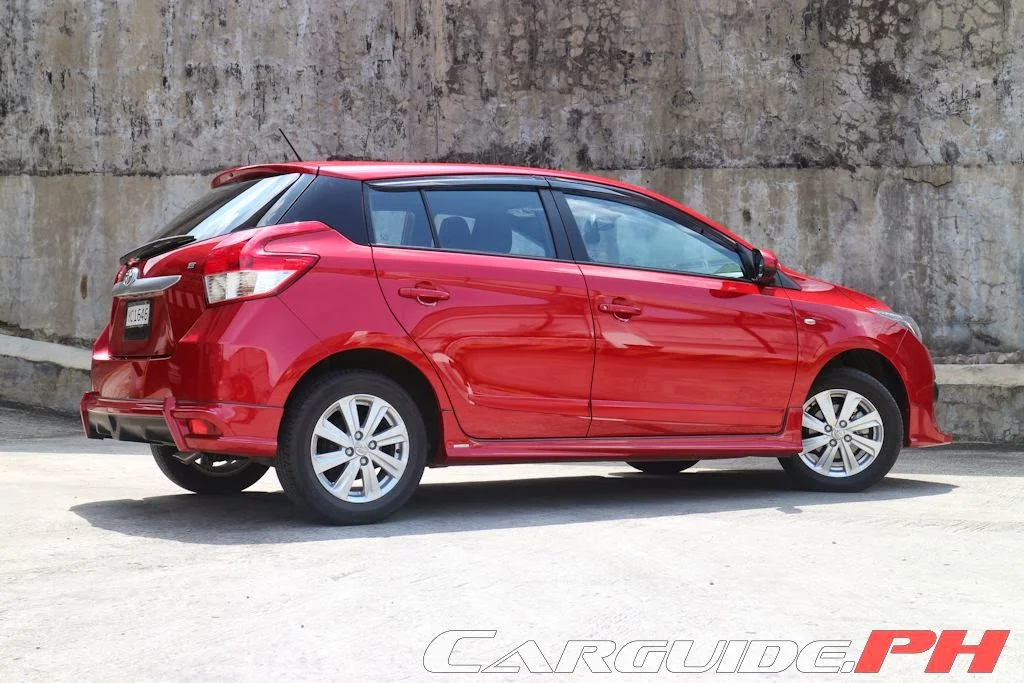


Just to clarify, are the FC figures usualy posted as part of the article done via the trip computer's estimates of FC for the city and highway and not checked manually via full tank method?
ReplyDeleteIf so, would it be possible to mention that? Or validate it with a full tank method?
As well as add the information for the average speed in city/highway driving conditions encountered when said FC was obtained?
Just a thought to improve on the information being given, especially for these types of vehicles where FC is a big consideration.
Thanks.
Good point.
DeleteFigures are derived from an average of the full tank and trip computer (if equipped) method. All test drives are driven in roughly the same daily route.
As for Highway, these are long stints either on the NLEX or SLEX travelling at a consistent speed and using the trip computer as the basis.
All test drives are checked for proper tire pressure before they are even driven extensively.
This gives a more or less consistent figure on the amount of vehicles I have tested throughout the years.
Hope this helps.
Isnt 9 kpl in the city a little bit too low for a 1.3? I mean, my car is a 1.3 jazz and it is able to achieve 12kpl in city driving. Daily route is from diego silang in c5, to batasan hills in congress. Must be the difference in the tranny and weight then...
ReplyDeleteIt's not as simple as that. You have to take into account your average speed throughout your trips in the city driving scenario when you achieved the 12km/ltr.
DeleteThe above might have been done at a lower average speed throughout while yours was achieved because you had a higher average speed throughout. It helps if you can also post your average speed to get a better idea of the conditions at play. This would help in determining why there is such a disparity in figures.
I thought they need to improve like projector headlight like yaris in US
ReplyDeleteThe 1.5L variant has projector headlights. Same with the Vios, the top of the line models are well-equipped.
DeleteGot the 1.5 A/T Yaris and have been driving it for a week. Ulysses, I love it :)
ReplyDeleteI wonder what made you choose that over a more capable Honda Jazz... Just curious.
Deletetoyota vs honda again? tested engine from toyota. Low casa maintenance from toyota. we have toyotas, nissans, isuzu & mitsubishi. Toyota parin ang pinaka reliable car overall. we never had hondas kasi horror stories from our cousin who owns 3 hondas. They eventually shifted to toyota also
DeleteThat's the mentality of people who buy those crappy crosswinds and L300s, because of its old "tested" engine. Takot sumubok sa bago.
DeleteAs for the low maintenance, the PMS cost of a toyota and a honda are negligible but still honda's parts are slightly more expensive.
What honda cars did your cousin own? Maybe it was a long time ago? Let me tell you, times have changed. Bihira na lang yang may masisira sa sasakyan. Except of course, kung china-based yung brand ng kotse.
you mentioned in your Vios review that the 1.3 engine is less efficient than the 1.5 engine. meaning the same holds true for this car? ironically, it would be wiser to go for the 1.5? thanks
ReplyDeleteLol Uly. I also noticed the glove compartment that doesn't close so well for the Vios we have. So its the same for Yaris. Is the light inside near the rearview mirror too? It makes looking for stuff hard at the back. I agree the looks department is a big leap from the boring predecessors.
ReplyDeletewhat's the difference between the vios 1.5g and yaris 1.5g? specwise, i don't see any difference.. i'm new at this so i just want to know which should i buy in case those are my choices
ReplyDeleteVios has beige interior while Yaris has a black and orange themed interior. Honestly the yaris is the better choice, it looks much more handsome than the vios plus the interior looks sportier. The yaris is also less common than a vios, which also gives you the advantage of not being mistaken for a taxi cab.
Deletethe sedans in Africa (Vios in PH) are called YARIS
ReplyDeleteJust curious, can Yaris withstand the curvy and steep roads of tagaytay and baguio? I have my eyes set on this one but still hesitant coz I'm not sure if it will deliver. Thanks
ReplyDeleteHi i'm torn between suzuki swift sport (1.2 AT) and yaris (1.3E) for my first car. Will be using this weekdays Boni-Makati. Then weekends to Pampangda + occasional trips here and there. Any advice? Thanks
ReplyDeleteHi'could you please help me decide which car should i buy?my choices are toyota yaris E MT and honda city E MT.thankyou..
ReplyDeleteyaris 1.3 or swift 1.2
ReplyDeleteI'd go Honda Jazz if you can pay the difference.
DeleteBut if you can't, it's a toss up. Both are equally capable in the city, but the Swift is just more fun to drive. It's a bit tighter though.
Compared with other sedan, I still prefer Toyota Yaris
ReplyDelete